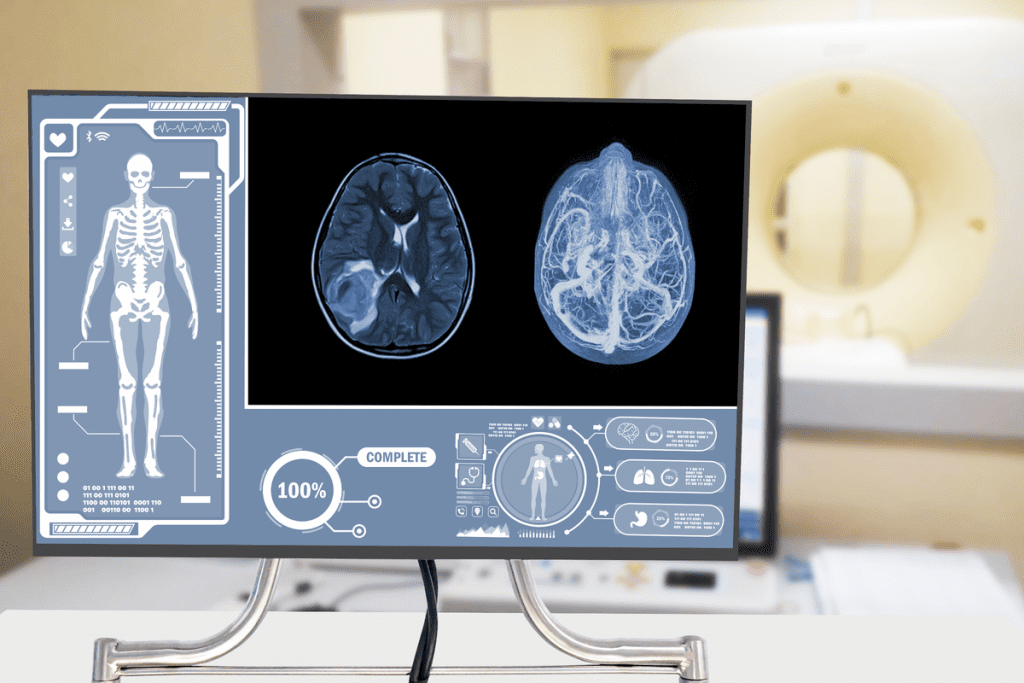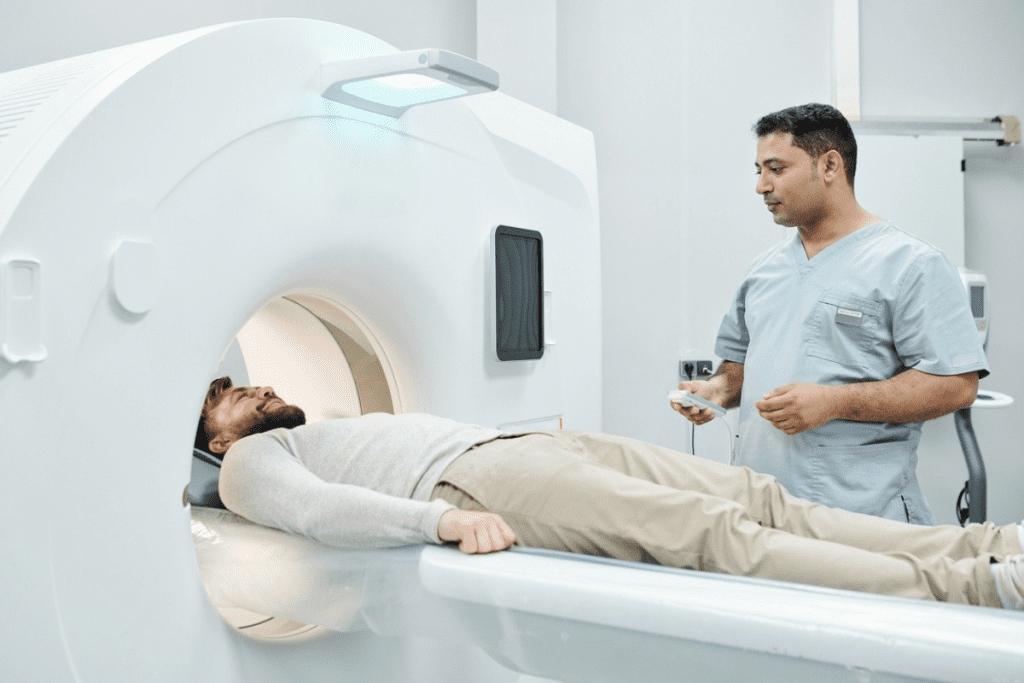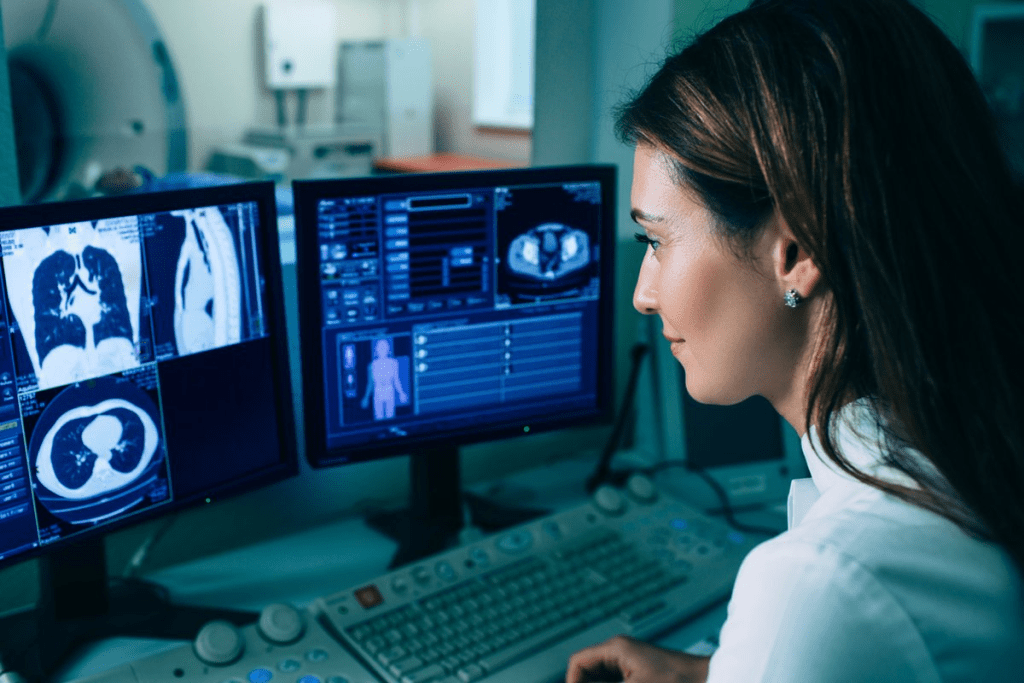Last Updated on November 25, 2025 by

Many patients feel tired after a CT scan. The scan is safe and doesn’t hurt, but some people experience fatigue. It’s normal to worry and feel tired after a CT scan.
CT contrast side effects are an important consideration in modern medicine. Contrast agents help doctors see inside the body more clearly, but some patients may feel tired or weak after their use. At places like LIV Hospital, doctors work to manage CT contrast side effects and help patients recover more comfortably.
Many people feel tired after a CT scan. This tiredness is caused by how the body reacts to the contrast agents used. It’s a common side effect.

Studies show that up to 59% of patients feel very tired within 10 days after a CT scan. This is true, even for those who had neurological events. It shows how common this feeling is.
Also, research found that over 90% of patients are tired for more than a month. This highlights the need to understand and manage this side effect.
Fatigue after a CT scan can last from a few days to weeks. The exact time depends on the contrast agent and the patient’s health.
It’s important for patients to know that some tiredness is normal. But if the tiredness is severe or lasts too long, they should tell their healthcare providers.
Normal fatigue is just feeling tired. But severe exhaustion, dizziness, or other unusual reactions are concerning. Patients need to know the difference to get the right care.
It’s key to know the difference between normal post-scan fatigue and serious reactions. This helps keep patients safe and aids in their recovery.
Knowing why you feel tired after a CT scan is key to feeling better. A CT scan, with or without contrast, can make you feel tired. Several things happen during the scan that can make you feel fatigued.

Waiting for a CT scan can make you stressed and anxious. This stress can last even after the scan is over. It can make you feel very tired.
Studies show that stress and anxiety can make you feel more tired. This is true for people getting medical. Relaxation techniques or talking to a counselor can help.
During a CT scan, you have to stay very quiet and in one spot. This can be a bit tiring, even if it’s not much. Being comfortable and knowing what to expect can help.
The hospital can be overwhelming. The noise, the new place, and waiting can make you tired. Making the process faster and shorter can help.
Getting ready for a CT scan can make you feel weak or tired. Fasting, for example, can lower your blood sugar and make you feel tired. It’s important to follow the instructions and get help from your doctor.
Understanding why you feel tired after a CT scan helps both patients and doctors. We can work together to make things better. This includes reducing stress, making the scan process smoother, and giving clear instructions before the scan.
“Reducing anxiety and stress before a CT scan can significantly improve a patient’s overall experience and potentially reduce post-scan fatigue.” “ A Radiologist
Every person’s experience is different. By addressing these issues, we can help manage fatigue after a CT scan better.
Contrast agents in CT scans can cause fatigue in some patients. These agents improve CT scan image quality for better diagnoses. They can be taken orally or given through an IV, depending on the body part being scanned.
Intravenous contrast agents help see blood vessels and organs in CT scans. Given through an IV, they spread fast in the body. They absorb X-rays, making different body parts stand out. But this can cause side effects in some.
Reactions to these agents vary. Some people feel mild effects like nausea or fatigue. Others may have more serious reactions. The type of agent and the person’s health can affect how severe these reactions are.
Iodine-based contrast agents are common in CT scans because they improve image quality. But they can cause side effects in some patients. Fatigue is a common side effect, affecting 5% to 12% of patients. Other reactions include allergic reactions, nausea, and vomiting.
Telling your doctor about any past reactions or allergies is important. This helps them choose the right contrast agent for you.
After being given, contrast agents are broken down and removed from the body. The kidneys are key in filtering these agents. How fast they are removed depends on kidney function and the type of agent.
In people with normal kidneys, these agents are usually gone in a few hours. But those with kidney problems may take longer. This can lead to longer-lasting side effects, like fatigue.
Knowing what a CT scan involves can make you feel less anxious. A CT scan with contrast is a detailed test that needs some prep and has certain effects after it’s done.
Before a CT scan, you’ll need to follow some steps to make sure it goes well. You might need to fast, avoid certain meds, and take off metal items or jewelry. It’s also key to tell your doctor about any allergies, like to iodine, and health issues like kidney disease.
Drinking lots of water is also good advice. It helps get rid of the contrast dye after the scan. Always follow the exact instructions from your doctor or the radiology team.
During the scan, you’ll lie on a table that moves into a big machine. The whole thing takes just a few minutes. The contrast dye is given through an IV to make some parts of your body show up better.
The scan itself doesn’t hurt, but you might feel a bit warm or taste something metallic when the dye is given. The person running the machine can talk to you through an intercom from another room.
Right after the scan, you can usually go back to your normal day unless your doctor says not to. Some people might feel sick or get a rash from the dye, but these usually go away quickly.
Drinking lots of water helps get rid of the dye. It’s also good to watch how your body reacts to the dye and tell your doctor if anything seems off.
The dye from the CT scan usually leaves your body in 24 to 48 hours. If you have kidney problems, you might need to be extra careful or get checked more often after the scan.
Even though serious long-term problems from CT scan dye are rare, it’s important to follow up with your doctor as planned. This helps make sure you recover well and talk about the scan results.
It’s key to know how post-CT fatigue affects recovery and how well tests work. Studies show it can make tests less accurate and slow down healing. This highlights the need for a team approach and focusing on the patient’s experience.
The experience of a patient during a CT scan with contrast greatly affects their treatment success. Post-CT fatigue is more than just a minor side effect. It can change how patients react to treatments and their healing path.
The link between a patient’s experience and treatment results is complex. Things like pre-scan anxiety, the effort of the scan, and the hospital setting all matter. They influence how well a patient recovers from a CT scan.
Fatigue after a CT scan can make it hard for patients to follow up care advice. This includes keeping appointments and making lifestyle changes for healing.
Talking openly with your doctor is very important. If you’re feeling very tired or symptoms last, tell your doctor. They can help manage the side effects of CT contrast and other fatigue after the scan.
Telling your doctor about ongoing symptoms is key to adjusting treatment plans. Patients should share any contrast dye CT side effects they notice. This info is critical for their ongoing care.
By understanding the effects of post-CT fatigue and keeping communication open, we can improve recovery and test accuracy. This team effort is vital for the best health results.
Knowing why you might feel tired after a CT scan helps you recover better. By following advice and taking good care of yourself, you can feel better faster. This way, you can get back to your usual activities without much trouble.
Feeling tired after a CT scan with contrast is usually short-lived. But knowing about possible side effects can help you prepare. If you keep feeling tired or have other bad side effects, tell your doctor right away.
Looking after yourself is key to getting better. Being informed and taking action can make a big difference. This way, you can deal with any side effects from the CT scan and live your life as usual.
Common side effects include fatigue, nausea, and allergic reactions. Mild reactions are common, but severe reactions can happen too. We’ll explain the side effects and how to handle them.
Side effects from iodine contrast vary. Mild reactions usually go away in a few hours to days. But some might feel tired or have other symptoms for longer. If symptoms last, talk to your doctor.
You might feel a bit tired after a CT scan with contrast. This tiredness is usually mild and short-lived. You can go back to your usual activities unless your doctor says not to. We’ll guide you through the recovery.
Yes, drinking water helps get rid of the contrast agent. It also helps with fatigue.
Rest, stay hydrated, and slowly get back to normal activities. If fatigue is severe or lasts, see your doctor.
Most people safely get rid of CT contrast agents. But some might face risks like kidney damage, mainly if they already have kidney problems. We’ll discuss the risks and benefits.
Your doctor might suggest medication for side effects. Always check with your doctor first to make sure it’s safe for you.
Normal fatigue is mild and short. But, severe or lasting fatigue, or symptoms like trouble breathing or severe pain, need immediate medical help. We’ll show you when to seek urgent care.
Subscribe to our e-newsletter to stay informed about the latest innovations in the world of health and exclusive offers!